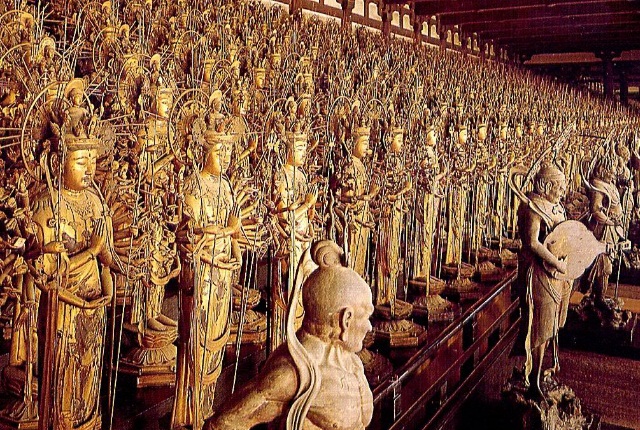

#Kannon buddha japanese kami full
Above the 10 heads of Kannon is the head of Amida Buddha, representing full enlightenment.


Each head represents a stage on the bodhisattva’s path. Kannon is depicted atop a lotus blossom and is wearing a crown made of 10 incarnations of Kannon’s head. The statue is approximately a meter high and carved from a single piece of Japanese cypress. The statue is believed to have been carved by Sugawara no Michizane (845–903), the noted scholar and poet who was later deified as the Shinto kami of learning, Tenjin. Kannon, the bodhisattva of compassion, is the central object of worship at Dōmyōji. Within its grounds are an impeccably tended rock garden and a thousand-year-old statue of Kannon. From mid-February to mid-March, the shrine holds a famous plum festival, where visitors can enjoy the sweet-smelling blossoms along with performances of traditional music and martial arts.ĭōmyōji is one of the few Buddhist convents still in operation in Japan. Behind the main hall of Dōmyōji Tenmangū lies a grove of over 800 trees including some 80 different varieties. Most Tenmangū shrines have Japanese plum trees planted within the grounds because Michizane was a great admirer of plum blossoms and wrote many poems about them. All the items are recognized as National Treasures and are displayed only on special days. This was taken as a sign from heaven, and Michizane was promptly buried at that spot.ĭōmyōji Tenmangū Shrine has been entrusted with the only known relics of Michizane-objects used by Michizane during his life: an ivory baton indicating his rank, a white porcelain inkstone, an ivory and tortoiseshell comb, an ornamental knife, leather belts, and a copper mirror carved with a phoenix and a koto player. The bull pulling the cart carrying Michizane’s body suddenly came to a stop. The bull’s connection to Michizane comes from a legend told about the scholar’s funeral procession. Worshippers touch the bull’s body where they would like to see an improvement in their own body. Students go to these shrines to leave a votive tablet or ema before a large exam.Īt many Tenmangū shrines there is a bronze statue of a bull. The hundreds of Tenmangū shrines built throughout Japan are dedicated to him. After Michizane’s death in 903, he was deified as the kami of scholarship and literature, Tenman-Tenjin. Michizane was an influential scholar, poet, and minister in the court of Emperor Uda (876–931). Dōmyōji Tenmangū Shrine is a popular place to pray for academic success and to enjoy the spring plum blossoms, both of which have close associations with the shrine’s main deity, Sugawara no Michizane (845–903).


 0 kommentar(er)
0 kommentar(er)
